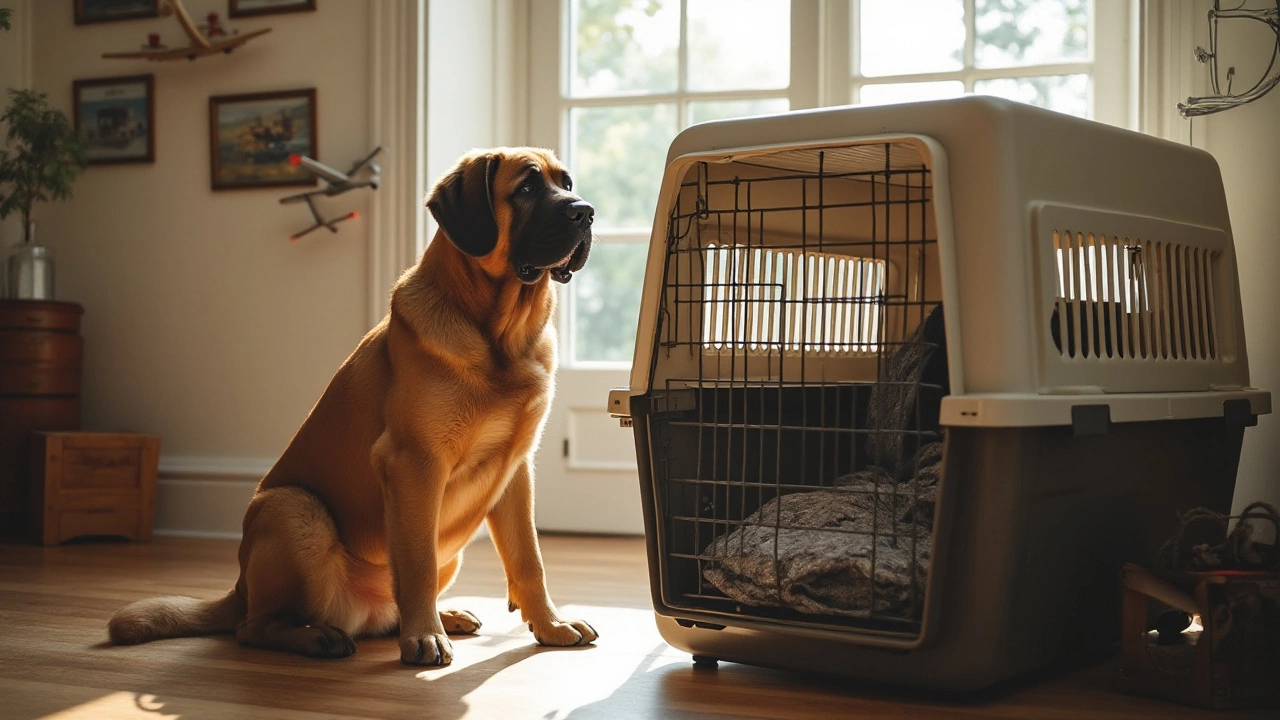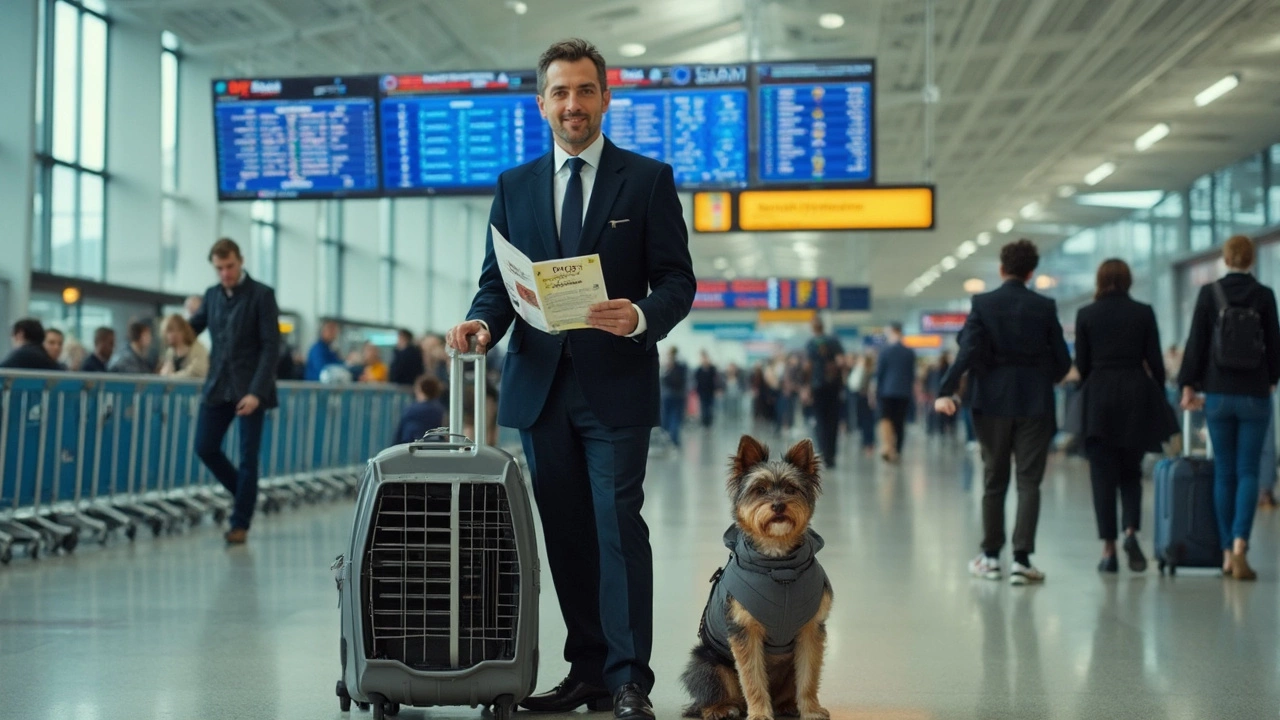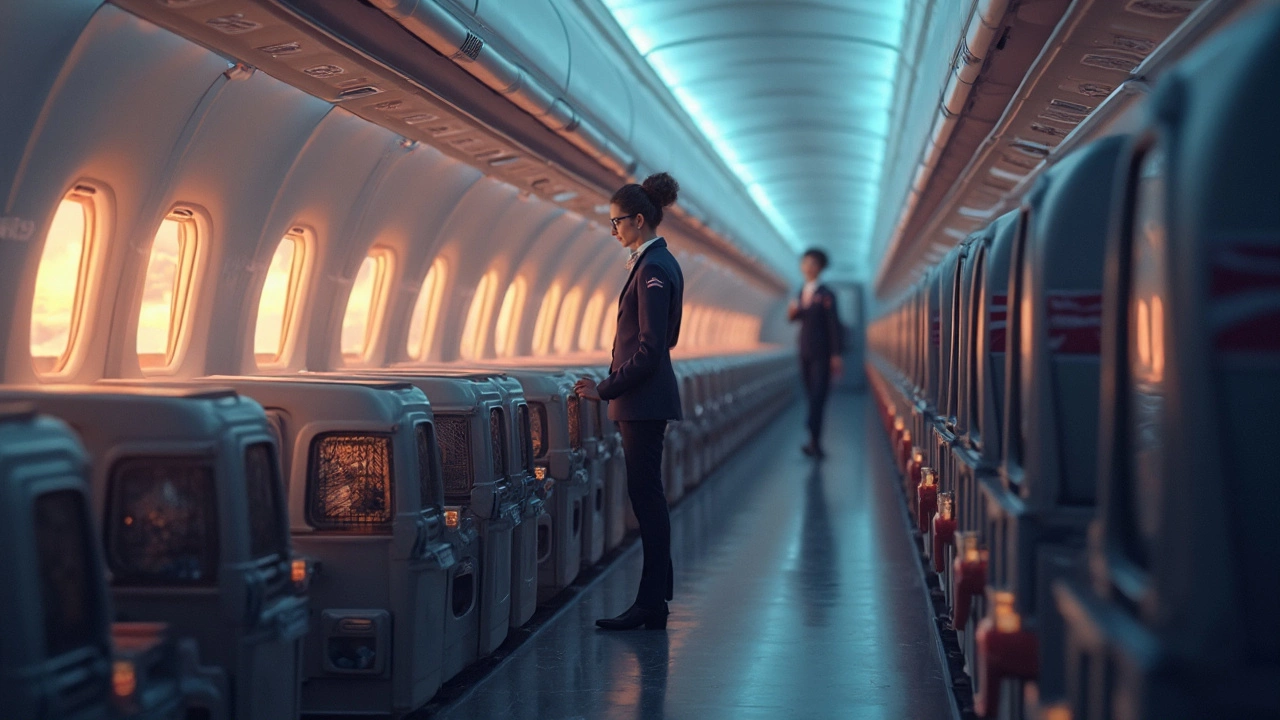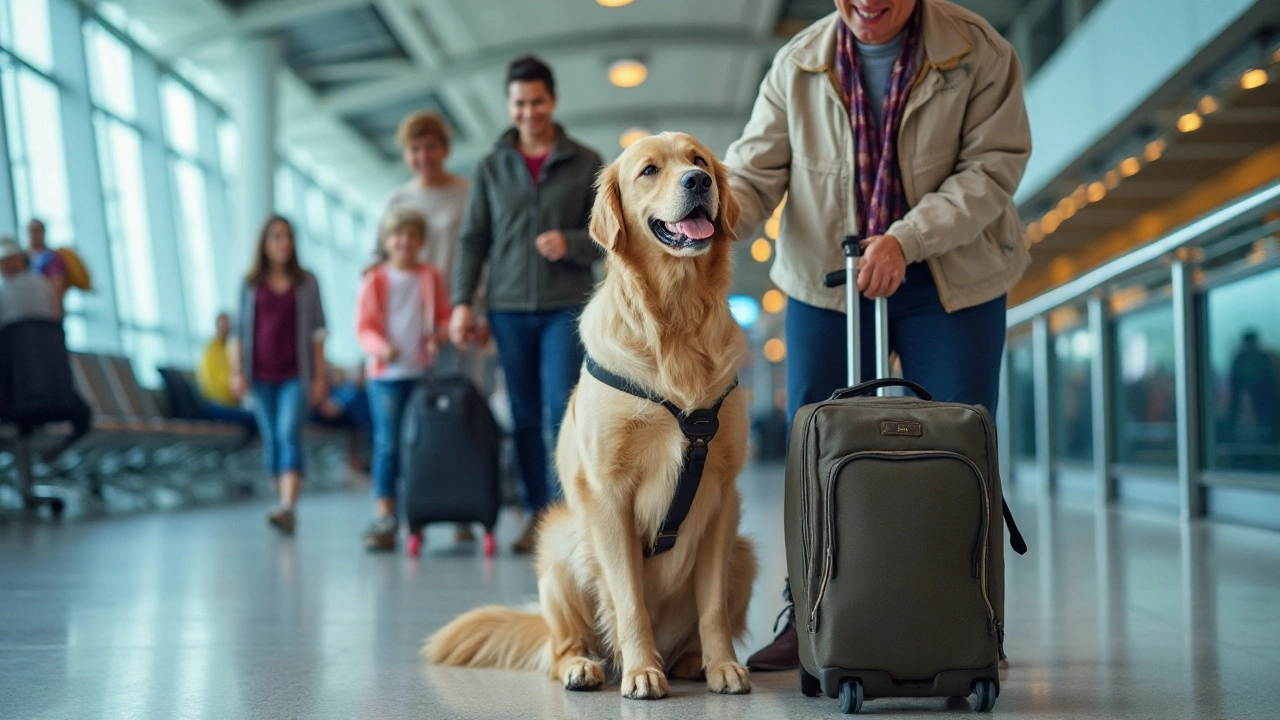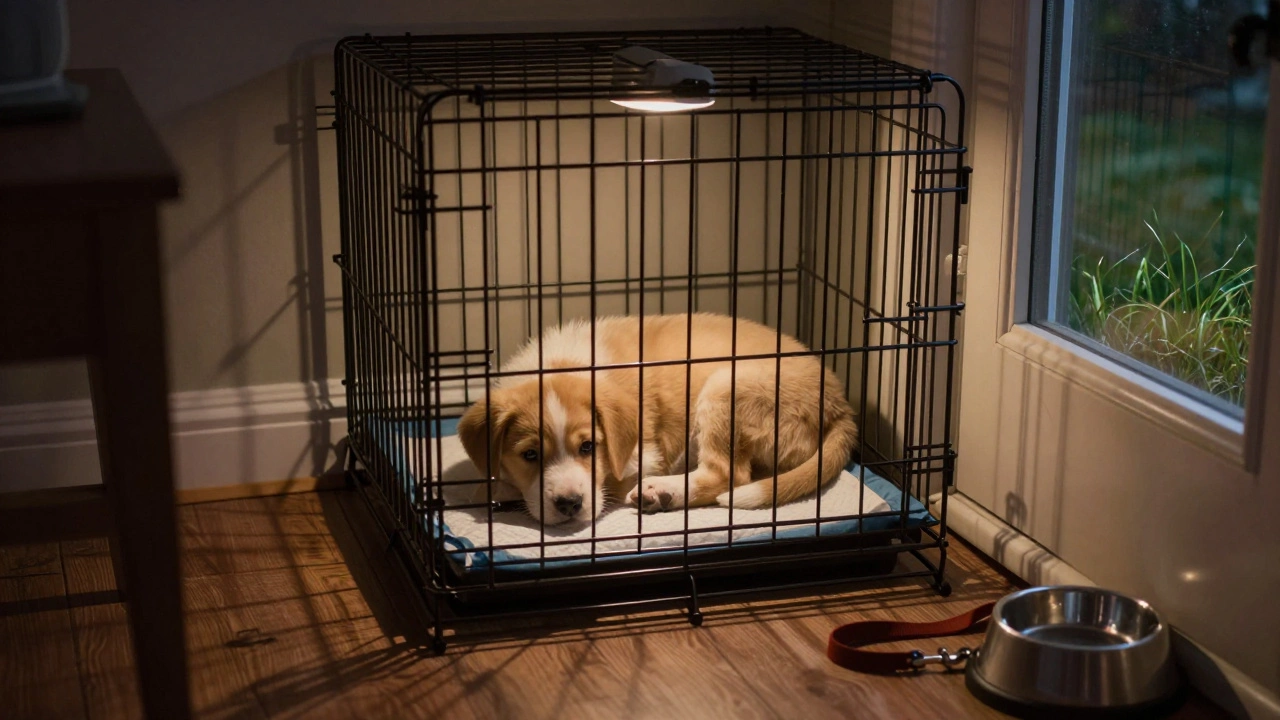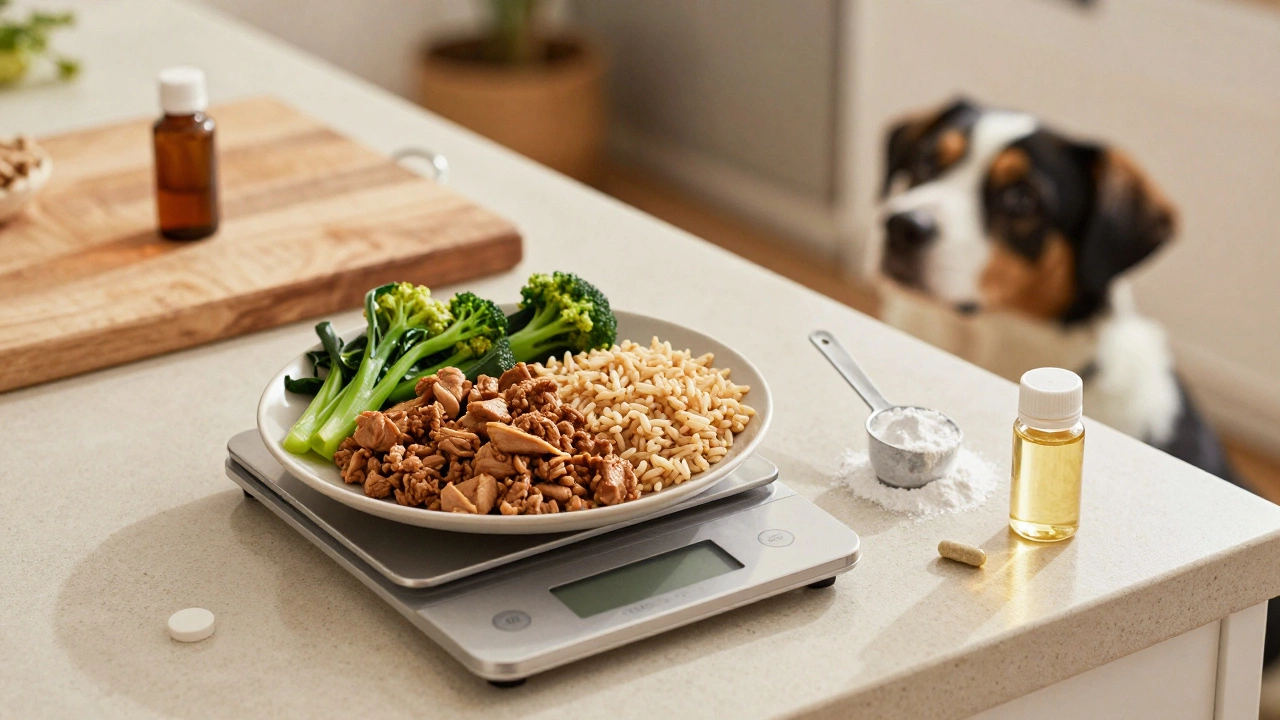Traveling with a furry friend can be a complex affair, especially when your dog is on the larger side and can't accompany you in the cabin. As air travel with pets becomes increasingly common, many pet owners find themselves navigating the intricacies of airline policies and travel options.
It's important to first understand the specific airline regulations that guide pet accommodations, varying greatly between carriers. These rules can affect your decisions and ultimately shape your travel experience. Beyond the paperwork and policies, it's essential to prepare your pet for the journey, ensuring their comfort and safety as you both embark on this adventure together.
This article seeks to explore the possibilities, from streamlined prep tips to exploring other transportation routes, guaranteeing your beloved canine partner a smooth journey, reaching your destination together without unnecessary hitches.
- Airline Policies for Large Dogs
- Preparing Your Dog for Air Travel
- Alternatives to In-Cabin Travel
- Ensuring a Safe and Comfortable Journey
Airline Policies for Large Dogs
Air travel with pets, particularly large dogs, requires navigating a maze of airline policies that can vary tremendously across different airlines. As a pet owner contemplating an air journey, it is crucial to thoroughly understand these rules and prepare accordingly. Most airlines do not permit large pets to travel in-cabin due to size restrictions and instead, offer cargo hold options. The specifics can range from the size limits to the breed restrictions, which can be due to safety concerns like breathing difficulties in brachycephalic breeds.
Generally, dogs weighing over a certain limit, often around 20 pounds, will not qualify for in-cabin travel. Instead, airlines like American Airlines and Delta provide climate-controlled cargo sections. It's worthwhile noting this information is subject to change; it’s prudent to contact your chosen airline well in advance and confirm their current policies. Detailed exploration of booking processes can save you from unexpected last-minute hiccups. For example, certain airlines may require that pets accompany particular travel routes or flights, and adherence to their specified check-in procedures is mandatory.
Interestingly, some airlines have adjusted their pet travel regulations to accommodate interest from passengers due to the rise in pet ownership. Despite this, aspiring sky-bound pet owners must be prepared to pay substantial fees that tend to increase depending on the journey length and destination. In 2022, pet travel on airlines saw more than a 20% increase in fees, reflecting these evolving policy dynamics. For those adamant about reducing their pet's stress, researching carriers known for innovative approaches, such as KLM's Animal Hotel service, may be beneficial.
The International Air Transport Association (IATA) advises, "Knowing the variations in regulations between airlines can make all the difference to the comfort and safety of your pet on its flight."
Traveling with large dogs in cargo might be necessitated, but the focus is always on ensuring comfort and safety. This involves confirming ventilation standards, temperature controls, and even positioning within the aircraft. A practical tip is to opt for flights during the cooler parts of the day, especially for pets traveling in cargo. Early morning or late evening flights lessen the potential for overheating.
If a first-time pet traveler, invest time in reading customer reviews or joining pet owner forums, where fellow travelers share their firsthand experiences. Such insights are invaluable for gauging how accommodating an airline might be towards large dogs. A frequently updated list of top pet-friendly airlines can also be a helpful guide in selecting a flight provider. Dogs flourish in environments where they're familiar, and choosing the right airline plays a significant role in ensuring this familiarity during travel.
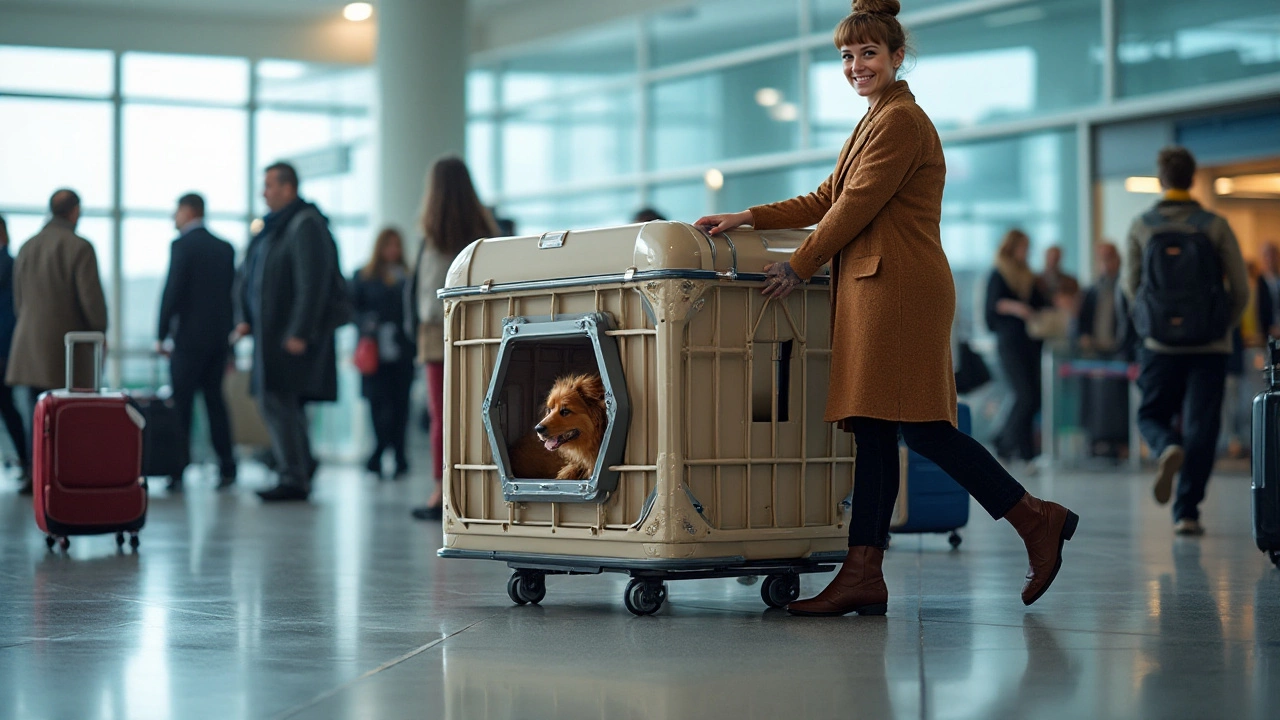
Preparing Your Dog for Air Travel
Getting your canine companion ready for air travel requires careful planning and attention to detail to make sure the journey is stress-free for both you and your large dog. It’s important to familiarize your pet with travel processes in advance as sudden changes can make them anxious. Start by introducing your dog to their travel crate well ahead of time, allowing them to explore it outside of travel situations. The crate is not just a temporary kennel but rather a space that should feel safe and comforting for your dog. Leave it open and accessible, perhaps with favorite toys or a soft blanket inside. Over time, encourage your pet to rest inside, gradually acclimatizing them to the space.
Consider using positive reinforcement training to get your pup used to spending longer periods in the crate. Rewards, such as treats and verbal affirmations, can be highly effective in motivating your dog. These techniques are backed by leading animal behaviorists and make a noticeable difference in how pets react to travel environments. If your dog is particularly nervous, consult your vet about using natural calming aids like lavender or pheromone sprays. Some pet owners have found that even the presence of a worn t-shirt with your scent in the crate can be comforting.
Travel preparation is not just about familiarization, though—it also involves health readiness. Schedule a veterinarian appointment well before your trip to ensure that all vaccinations are up to date and obtain any necessary travel certificates required by your airline. Some airlines might also demand a vet-signed affirmation of your dog’s fitness to fly. These documents are crucial and can prevent complications at the airport. A proper pre-flight checkup might also cover motion sickness options for your dog, a common issue for pets during transit. According to the UK’s Animal Health Trust, «Motion sickness is reported by around 20% of pet owners, significantly more prevalent in younger dogs». It’s essential to discuss appropriate solutions with your vet to ease any discomfort they might experience during air travel.
Alongside health preparations, consider your flight schedule. Ideally, choose flight times that coincide with your dog’s usual routines. Traveling during their usual rest hours can help ease them into the journey. Additionally, ensure you’re well-equipped with travel essentials before setting off, which includes familiar foods and medications. Remember, flight delays could leave you waiting for extended periods, so pack enough supplies to last beyond the expected duration of each leg of your trip. With these preparatory measures, you’ll be propelling yourself and your furry friend toward success on your next adventure.
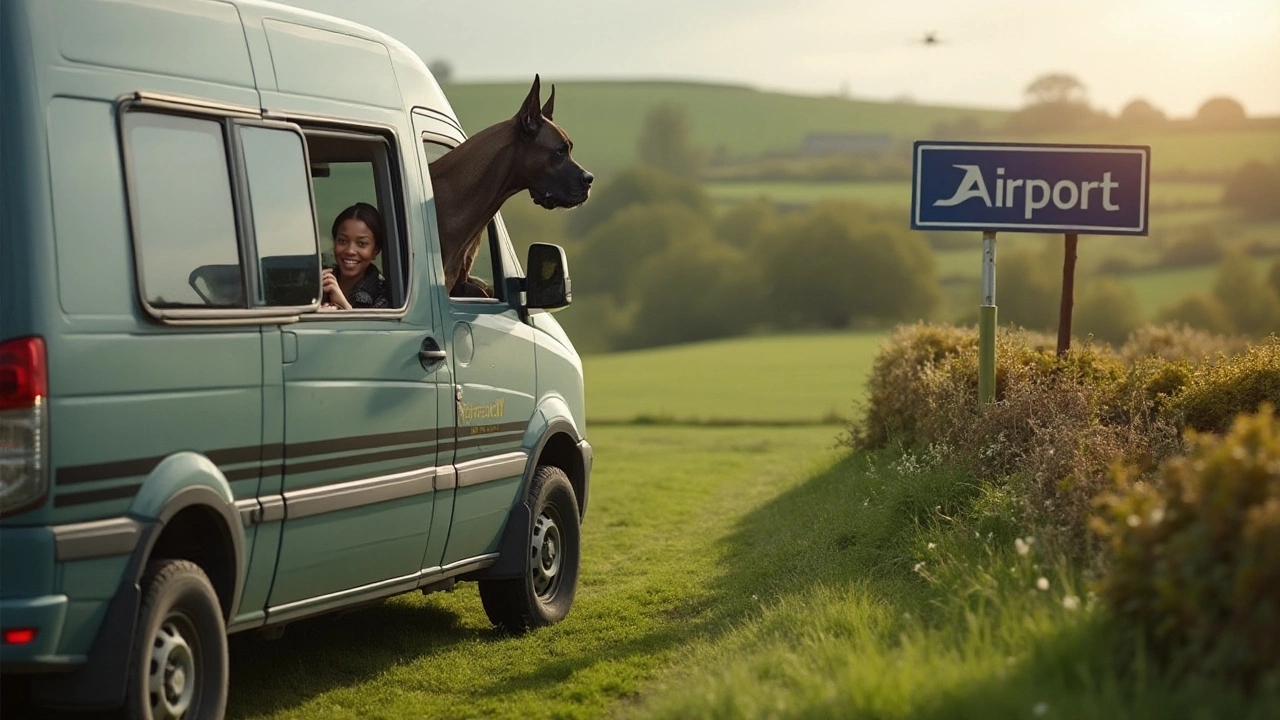
Alternatives to In-Cabin Travel
Finding the best way to travel with your large dogs can be a challenging task, especially when in-cabin travel isn't an option due to size restrictions. But fret not, because there are several viable alternatives that can ensure both you and your pet have a stress-free experience. One of the most common methods is utilizing cargo travel, where your pet is safely housed in a pressurized and temperature-controlled area of the plane. This might not sound appealing at first, but airlines have significantly improved these conditions over the years, addressing many pet owners' concerns about safety and comfort.
When considering cargo travel, it is crucial to do thorough research on the specific airline policies as each carrier will have its own rules regarding pet travel. Some airlines even offer specialized services for pets traveling as cargo, providing you with updates throughout the journey. Meanwhile, ground transportation remains a practical option for those hesitant about air travel. Hiring professional pet transport services can assure you of a safe and reliable method on long journeys. These services often feature trained handlers who ensure your pet's needs are met during the trip, offering regular breaks and maintaining hydration and nourishment.
If neither air nor ground transportation sounds fitting, you may want to explore the adventures of RV travel, turning your trip into a road trip spectacle. Bringing your large dog along in an RV can mean convenient stops, scenic detours, and bonding time with your canine companion, all within the comfort of your chosen pace and itinerary. Speaking of bonding, for those who like to stay fit and have a spirited dog, exploring trails and rediscovering the joy of walking or cycling with your pet could be an invigorating alternative, especially for regional travel.
The key to a successful journey lies in preparation. Building trust with your pet as they adapt to their travel carrier can make transitions smoother, regardless of the transportation method chosen. It's often recommended to familiarize your dog, particularly large dogs, with their travel crate or harness weeks prior to the trip. Adjust your travel plans according to your pet’s temperament and health, and when in doubt, always seek advice from a trusted veterinarian.
"Traveling with pets can be an extraordinary experience, but it requires patience, preparation, and understanding," advises Renowned Pet Travel Expert, Jane Harrington. "Whatever travel option you choose, make sure it caters to the unique needs of your beloved pet."
Moreover, considering living arrangements on arrival is vital to ensure the continued comfort of your pet. Certain accommodations are more pet-friendly than others, offering amenities specifically for traveling pets. Checking for pet-friendly accommodations and planning ahead can be a game-changer, making your travel experience memorable for all the right reasons. At the end of the day, exploring these alternatives and personalizing them to suit your specific needs enables you to embark on unforgettable adventures with your furry friend, whether on the road or in the sky.
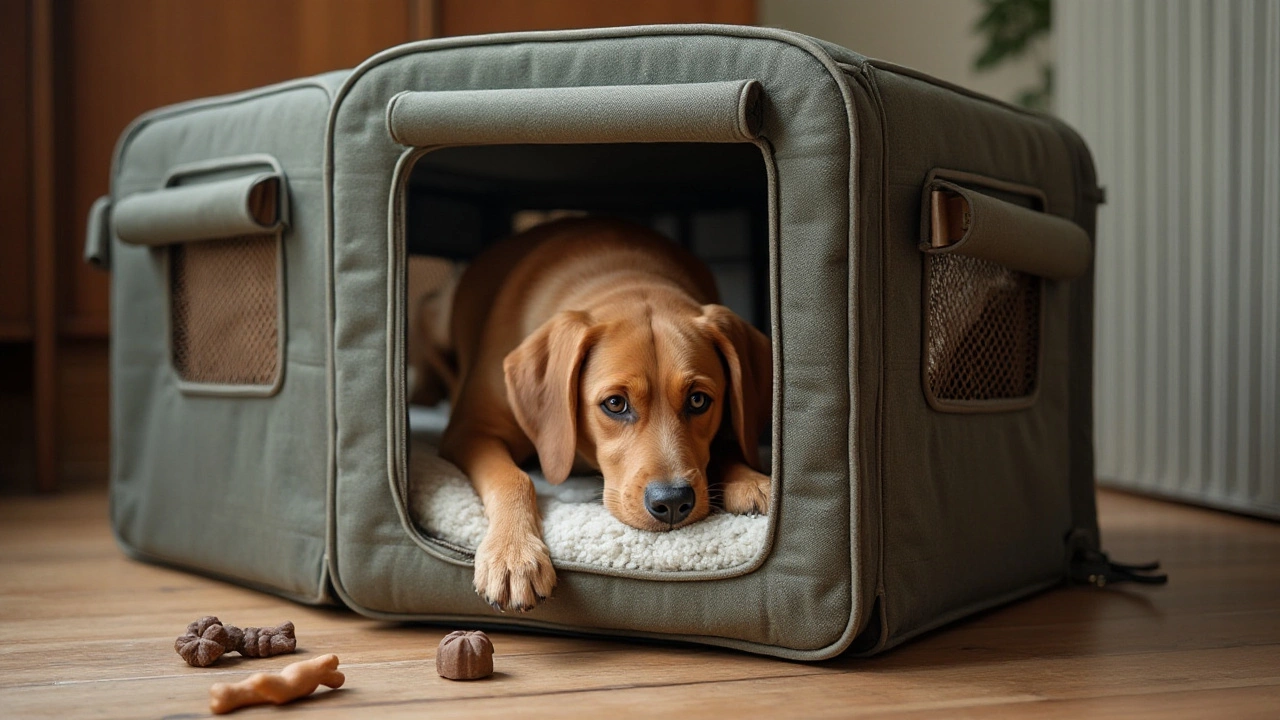
Ensuring a Safe and Comfortable Journey
The task of guaranteeing a safe and cozy flight for your large dog involves more than just booking a spot in the cargo hold. It's about thorough preparation, understanding the intricacies of airline regulations, and a bit of know-how about animal behavior. One critical step is selecting the right travel crate. It’s not just a box; it's your pet’s sanctuary for the journey. The crate should be spacious enough for your pet to stand, lie down, and turn around comfortably but must also meet the airline’s standards. Remember, these regulations are in place to safeguard your pet's well-being throughout the flight. Ensuring you pick a sturdy, ventilated crate with ample headroom is paramount.
Before the day of your journey arrives, train your furry companion to see the crate as a place of safety rather than confinement. This can be accomplished through the use of positive reinforcement techniques, rewarding them with treats and affection when they enter the crate willingly. Gradually increase the time they spend inside, so they become accustomed to it. Stress during travel is typically multifaceted, encompassing both environmental changes and physical discomfort. Therefore, it's wise to conduct regular practice runs in your vehicle. This not only aids in acclimating your dog to the sensation of traveling but also allows them to associate travel with positive experiences.
To enhance their travel experience, pack a travel kit, featuring the essentials: food, water, their favorite toy, and a blanket with familiar scents. Adding a chew toy can help alleviate anxiety and deter restlessness. Moreover, it's essential to avoid feeding your dog a heavy meal right before traveling to prevent discomfort or nausea. Hydration remains critical, so ensure they have access to water but moderate the intake to ward off unnecessary pit stops or accidents.
Consider additional steps, such as acclimating them to loud noises. Airports can be bustling and noisy. Exposing your dog gradually to similar sounds can reduce unease. When flying internationally, it's vital to research and understand specific import regulations concerning vaccination and quarantine requirements, which vary by country. This forethought can prevent an unexpected hiccup in your itinerary—nobody enjoys such surprises mid-travel.
If possible, book a direct flight on a pet-friendly airline. Direct flights reduce the duration of travel stress, and pet-friendly airlines are often better equipped to handle our beloved companion's needs. Also, aim to fly during non-peak hours when airport crowds are smaller and less daunting for your pet. As a responsible pet parent, your preparedness and decisions on these matters make all the difference.
Lastly, always keep your composure. Pets instinctively feed off their owner’s emotions. Staying calm and collected will, in turn, help soothe your dog, reinforcing their sense of security throughout the journey. As dog expert Cesar Millan once advised,
"Dogs pick up on your energy, so stay steady and they will mirror it."By following these tips, you'll embark on travels filled not just with comfort and safety, but with memories ready to be cherished.

